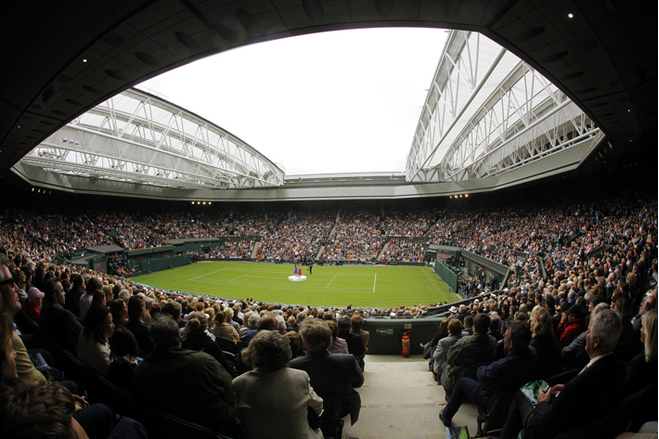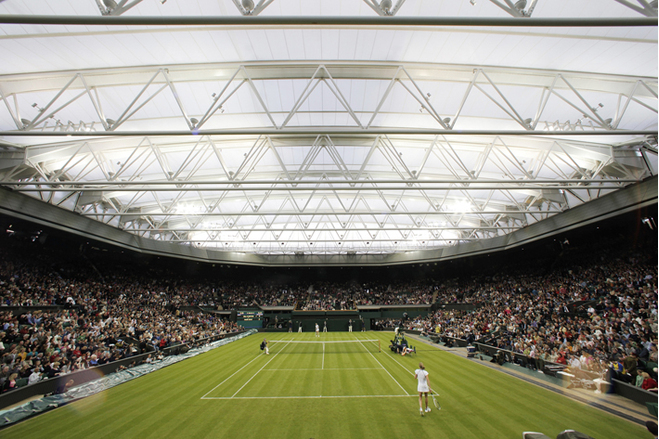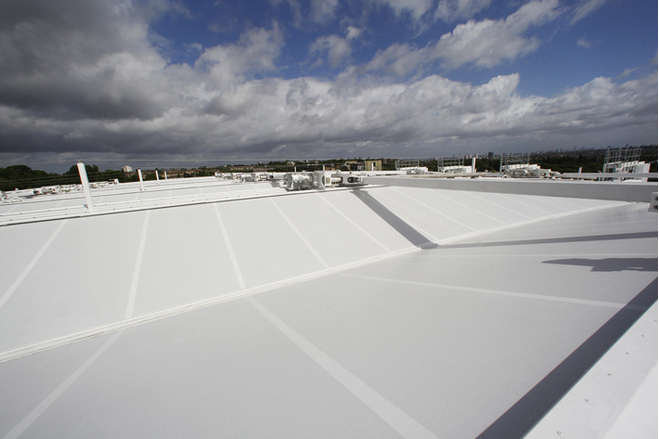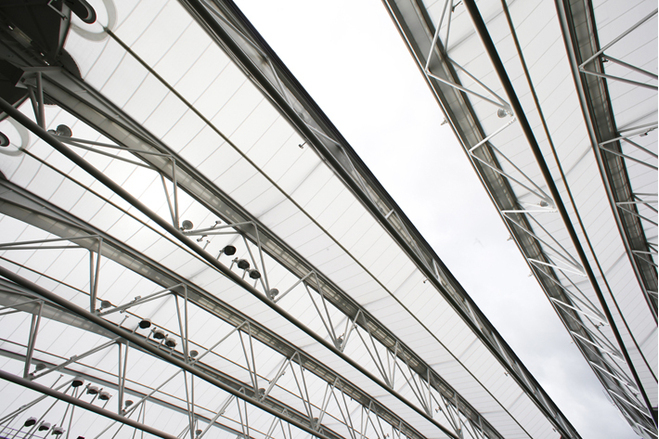Retractable roof Wimbledon’s Centre Court
General information
-
Location address
Wimbledon
-
Location country
United Kingdom
-
Function of building
Stadia
-
Degree of enclosure
Hybrid structure
-
Number of layers
double-layer
-
Type of application of the membrane
covering
-
Primary function of the tensile structure
- Rain protection
Description
2009 sees the start of a new era at Wimbledon, where the traditional tennis matches play to a worldwide audience. For the first time, a huge roof will roll out over the Centre Court when rain threatens to interrupt the legendary tennis tournament. W.L. Gore & Associates have significantly contributed to the technological achievement of British firm of architects HOK and British construction company Galliford Try by providing the 5200m² of roofing fabric, whose properties are ideally suited to Wimbledon’s new high-tech heaven. English summer rain has been a faithful companion of the oldest international tennis championship from the start. Finals have been interrupted or delayed, and the 14-day competition has sometimes had to be prolonged because the weather didn't want to play ball. The British tennis world took it philosophically. But for the many world visitors and the TV channels broadcasting the matches in over 130 countries, the interruptions meant headaches for everyone. So the All England Lawn Tennis & Croquet Club decided at the turn of the millennium to incorporate an extremely sophisticated, high-tech roof into the historic Centre Court (which dates from 1922).
The retractable roof is made of GORE™ TENARA® Architectural Fabric. Unveiled at a Centre Court Celebration, the concertina-design roof contains approximately 5200 m² of the fabric. The fabric was selected in part for its unparalleled ability to let light pass through while offering reliable protection from the elements. Play at Centre Court still feels like it’s outdoors, even when the roof is closed. This is important both to maintain the traditional experience for players and spectators, and to enable cameras to capture high quality images for broadcast. The roof comprises two styles of the fabric, the major part allowing 40% light transmission and some allowing 20%. The two styles are precisely placed to prevent shadows or bright spots on the court. The ability of the fabric to flex and fold without wear was another critical factor in its selection. The design of the roof, and the ability of the fabric to fold into a relatively compact space for storage, contributed to the addition of 1200 spectator seats to the stadium. For most of the year, the open roof will be folded into its housing for storage. The unique characteristics ensure that it won’t crack, crease or develop mold and mildew while stored. The flexibility of the fabric has also enabled the roof to be closed in only ten minutes, eliminating lengthy rain delays of the tournament. The roof will be closed for inclement weather, and an air flow system will ensure a comfortable environment within the stadium. The retractable roof is built in two sections, one with four bays and the other with five. The fabric was joined using high frequency welding, and is supported by ten steel trusses. Wheels move along tracks to open and close the roof, aided by a series of hydraulic jacks and arms. The roof spans approximately 77m across the court, and has a clearance of over 16m to accommodate high balls.
GORE™ TENARA® Architectural Fabric is a fluoropolymer-coated fabric woven from ePTFE (expanded polytetrafluoroethylene). It uses unique, patented double-coated technology to provide high light transmission along with the flexibility and drape of fabric. The high-strength ePTFE is unaffected by damaging UV rays, acid rain and other environmental challenges, providing durability that carries a 15 year warranty.
Description of the environmental conditions
Material of the cover
-
Cable-net/Fabric/Hybrid/Foil
Fabric
-
Material Fabric/Foil
Tenara
Main dimensions and form
-
Covered surface (m2)
5200
Duration of use
-
Temporary or permanent structure
Permanent
-
Convertible or mobile
Convertible and mobile
-
Design lifespan in years
11-20
Involved companies
-
Architects
HOK
-
Contractors
Galliford Try
-
Suppliers
W. Gore
Editor
-
Editor
Evi Corne





